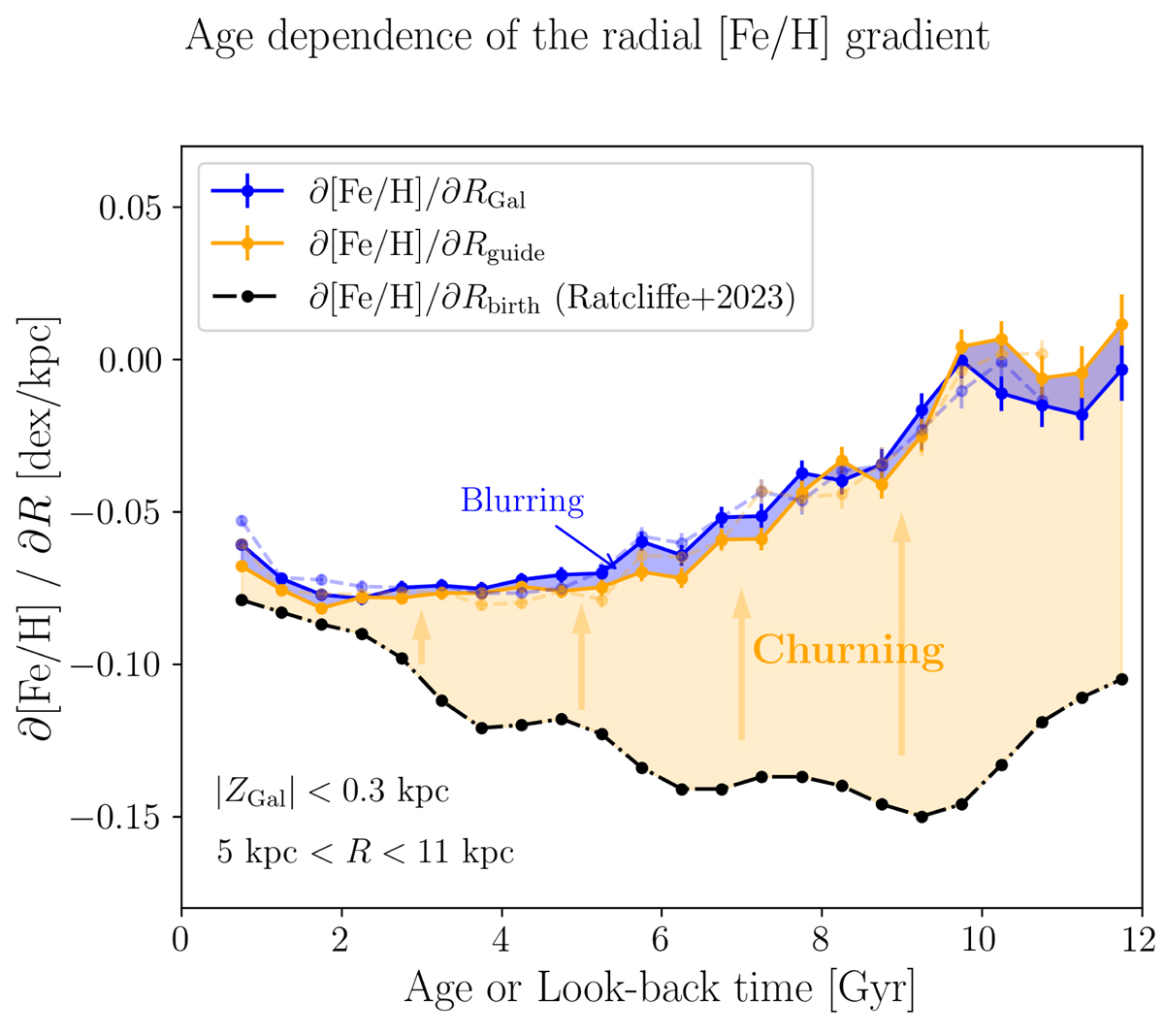Fig. 11.

Download original image
Age dependence of the radial [Fe/H] abundance gradient in terms of present-day Galactocentric distance (blue) and guiding-centre radii (orange). Each point was obtained by 3-parameter (slope, intercept, and dispersion) Bayesian fits to the [Fe/H]–R distribution, using only data in the respective age bin, restricted to |ZGal|< 0.3 kpc and 5 kpc< RGal/guide < 11 kpc (39 920 and 40 629 stars, respectively). The faint dashed lines and errorbars correspond to the gradients when using the alternative set of ages obtained with XGBoost quantile regression (see Appendix A). In black we overplot the radial [Fe/H] gradients in the interstellar medium across look-back time obtained by Ratcliffe et al. (2023), calculated for the same age bins. The difference between the blue and the orange line (blue-shaded region) can be attributed to radial heating (blurring), while the difference between the orange and the black line (orange-shaded region) highlights the influence of radial migration (churning). Beyond ∼10 Gyr, the gradients are consistent with zero.
Current usage metrics show cumulative count of Article Views (full-text article views including HTML views, PDF and ePub downloads, according to the available data) and Abstracts Views on Vision4Press platform.
Data correspond to usage on the plateform after 2015. The current usage metrics is available 48-96 hours after online publication and is updated daily on week days.
Initial download of the metrics may take a while.


